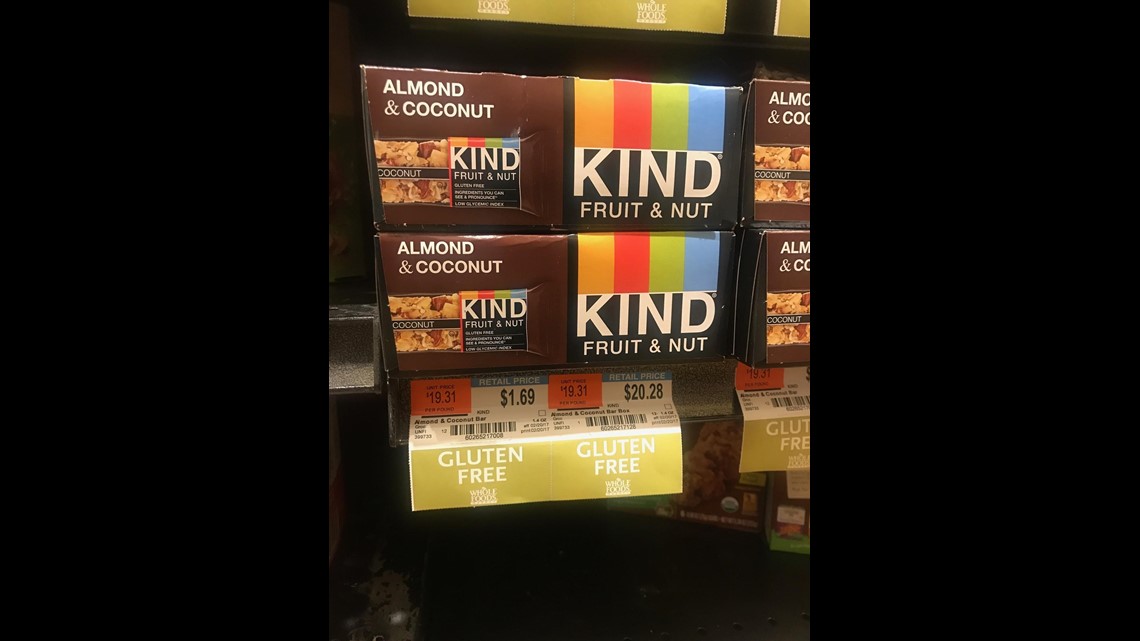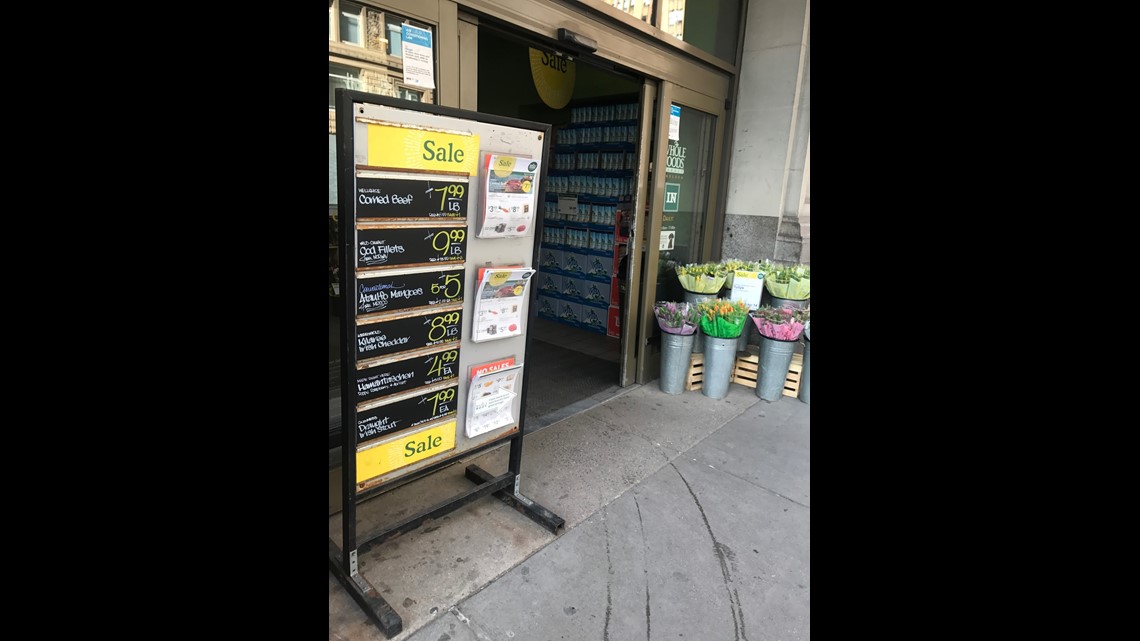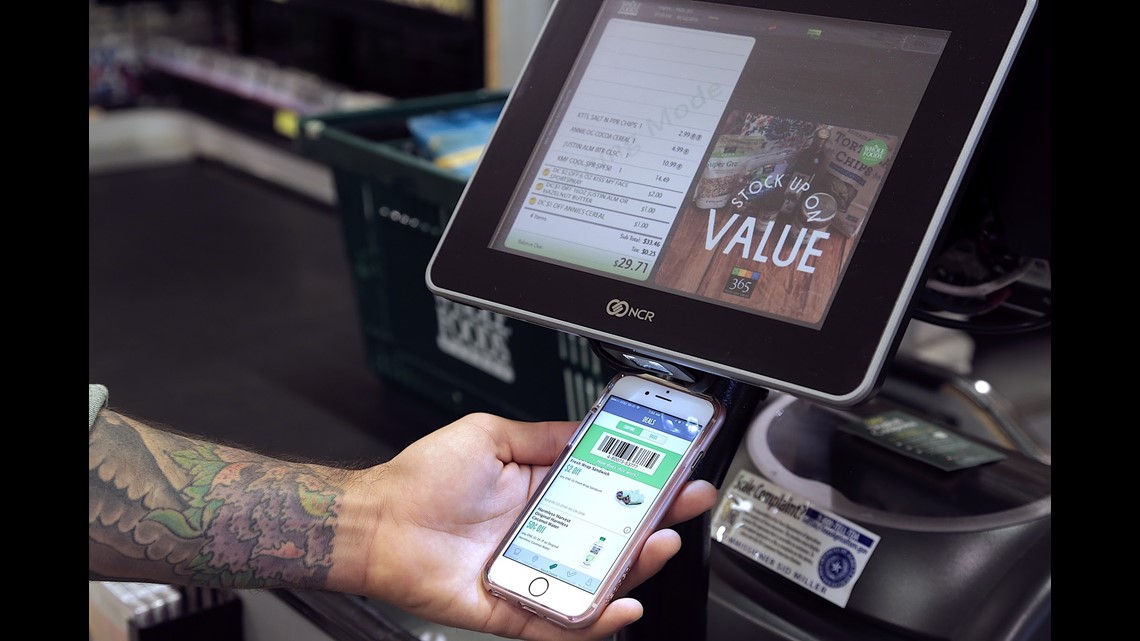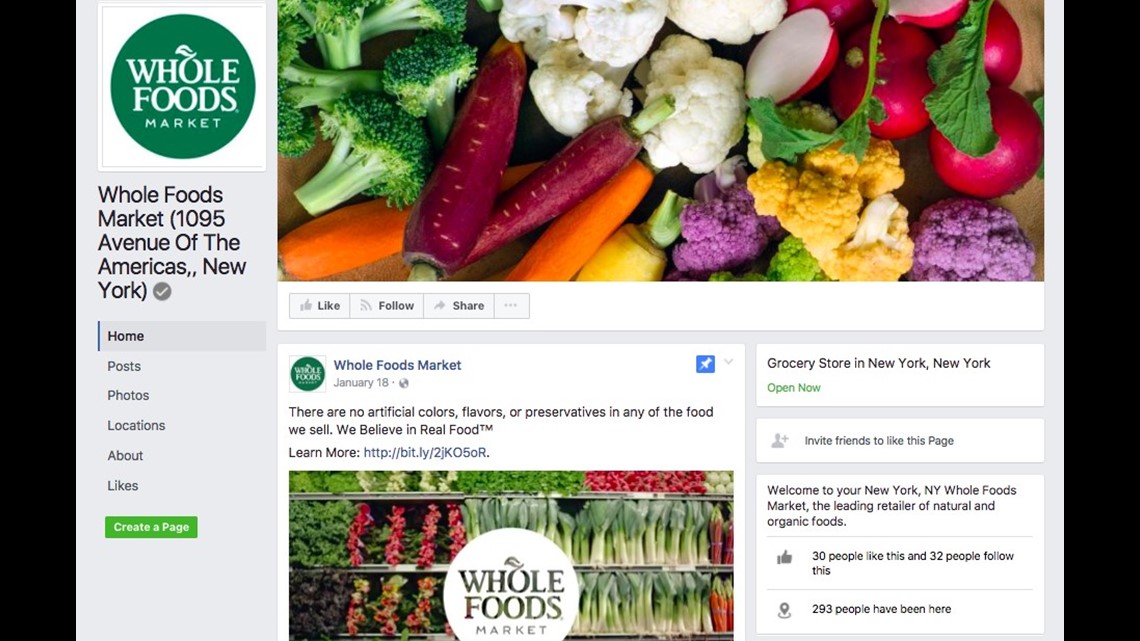It’s no secret Whole Foods is one of the pricier grocery chains. The store’s high prices are so popular that some consumers now call the grocer “Whole Paycheck.”
Good news: you no longer have to spend your entire paycheck on a shopping trip to Whole Foods. There are a number of strategies you can use to save money on your next shopping trip to Whole Foods. We’ve rounded up 19 of them.
1. Shop on Wednesdays
The best day to shop at Whole Foods is Wednesday. That’s because the retailer puts out its new weekly sales on Wednesdays. The sales may apply through the following Wednesday so — if you’re lucky — you might get a double discount on some items.
2. Look out for food holiday sales in 2017
This year, Whole Foods is celebrating a different food holiday each month. The retailer celebrates one month each day with an in-store offer and on its social media channels.
For example, Whole Foods celebrated National Pi Day on March 14, with deals for $3.14 off of any large pie from the bakery or any large take-and-bake pizza pie.
You can find out about upcoming food holidays through Whole Foods’ email newsletter. The sales are also promoted in stores during the week leading up to the promotion.
3. Ask for samples to try before you buy
Whole Foods has a very liberal free-trial policy. You can try almost anything — even packaged items — before you buy it at Whole Foods. Try something first, so you don’t waste any money on something you won’t enjoy and avoid wasting additional time and resources it takes to make a return.
4. Buy by the case for 10% off
If you’re coming back each week for the the same thing, you might want to consider buying it by the case. Whole Foods discounts most items sold by the case by 10%. It might not matter if you only want one or two granola bars, but if you have a favorite, you might save a few dollars (and trips to the grocery store) when you buy by the case. Make sure to ask the cashiers at your local store to see which bulk discounts the store offers.


For example, KIND bars at a New York City Whole Foods cost $1.69 per bar. But if you buy a whole box (12 bars), you’ll get a 10% discount — lowering the cost per bar to $1.52.
5. Buy wine six bottles at a time and save 10%
The 10% discount applies to wine sold at Whole Foods, too. When you buy wine in groups of 6, you’ll get a 10% discount on the bottles, and you might not need to make another trip to pick up wine next week. Some stores even allow you to mix and match brands; double-check with a cashier beforehand.
6. Split up pre-packaged products
Have you ever been frustrated you had to buy an entire cheese wheel when you only needed a portion of it? All you had to do was ask. Ask a Whole Foods store associate to split up products in most departments so you only buy what you need.
If you only need half a head of cabbage or a quarter-wheel of cheese, ask someone in the department to custom-cut the portion you need. You can ask for special cuts of meats and fish as well.
If you only need a small amount of something, like shredded carrots or strawberries, check out the salad bar to purchase smaller amounts, some ready to cook.
7. Check “The Whole Deal”
Snag a copy of Whole Foods’ coupon book, The Whole Deal, on your way in the store to find current coupons to apply to your purchase. You can get a head start when you check The Whole Deal online so you can plan your shopping to make the most of current promotions.


8. Sign up for the Whole Foods newsletter
Another simple way to save money at Whole Foods: sign up for the retailer’s newsletter. What’s better, it's delivered to your inbox for free each week. Sign up here to get coupons, recipes, and other shopping tips from Whole Foods via email.
You also have the option to update your profile with your go-to store and interests for content more tailored to your needs.
9. Use your coupons wisely
Make sure you have all of your coupons ready when you shop at Whole Foods because they may all come in hand when you need them.
You can stack coupons found in the store flyer, on the retailer’s website, and on the Whole Foods Market app on top of manufacturer coupons like these. Stacking coupons lets you combine discounts for greater savings.
10. Use discounted Whole Foods gift cards
Every dollar counts, and you can save a few more just by purchasing discounted gift cards online before you shop.
Use sites like Gift Card Granny, which aggregates discounted gift card offers from around the web for you. As of this writing, the site has a $125 gift card to Whole Foods available for 14% off. If you already spend about that much on your weekly grocery trip for the family, then you’ll already be saving a huge chunk. What’s better, you can challenge yourself to keep to a budget under the gift card’s limit.


Other great online gift card resellers are Raise, WhizWallet, and Cardpool.
The sites resell both e-cards and physical gift cards so you may have to wait a few days to get yours in the mail. After you get the card or code, you’re all set to use the discounted gift card.
11. Download the Whole Foods app
When you have the Whole Foods Market app, you’ll have access to all of the retailer’s digital coupons and promotions at your fingertips. You can also make your shopping list in the app to help you stay on track while you’re shopping so you don’t overspend, then use the app to present a barcode at checkout and automatically apply any eligible coupons.


12. Follow your local Whole Foods on social media
If your local Whole Foods store has its own separate social media accounts, follow their accounts via Facebook, Instagram, or Twitter to get notified when they’re offering local deals and promotions.


13. Shop store brands
You can score some savings when you shop the retailer’s store brands like the Whole Foods Market brand or 365 Everyday Value products. The store-branded products are often comparable to other mainstream brands, but cheaper.
For example, a 16-ounce bottle of 365 Everyday Value brand Aloe Vera Juice costs $1.49 online compared to $1.99 for the same size bottle of Viva Watermelon Aloe Vera Juice.
14. BYOB (bring your own bag)
Bring your own reusable bag when you shop at Whole Foods to earn up to 10 cents for each bag at checkout. It doesn’t sound like much right away, but the cents add up quickly, especially if you make multiple monthly trips to Whole Foods.
For example, someone who makes one trip to Whole Foods a week and walks out with four bags on average will save $20.08 annually if they bring their own reusable bags.
15. Buy in bulk
Shave your bill down a little more by shopping in the bulk bin section for products like grains, nuts, spices, or coffee. Bulk prices are usually cheaper because you’ll skip on packaging, and you’ll reduce waste as you’ll only buy what you need.
For example, at a Whole Foods in Manhattan, dried, juice-infused cranberries were priced at $5.19 per pound in bulk and $9.08 per pound in the Whole Foods packaged brand, while the organic International Harvest packaged brand cost $22.35 per pound.
16. Ask about the Whole Foods Market Rewards program
Whole Foods is rolling out a new Market Rewards program that you should totally ask about.
If you’re a Whole Foods fan, you’ll want to know the second the company’s new rewards program arrives at a Whole Foods near you. You’ll immediately receive 10% off a purchase when you sign up online or via the Whole Foods Market app. The program offers digital coupons based on items that you like, which are applied instantly to your purchase using the app on your phone or your phone number.
Currently, the program is only offered in the Dallas-Fort Worth area and Philadelphia. Find a full list of stores where the Market Rewards program is available here.
17. Shop seasonal produce
Shopping during peak harvest for fruits and veggies puts supply and demand on your side. The items will be abundant during the time, so you’ll often find them at the lowest prices during the year. A Whole Foods team member should be able to help you figure out which produce is in season. If you’d rather plan ahead, try using this seasonal guide from the USDA.
MagnifyMoney is a price comparison and financial education website, founded by former bankers who use their knowledge of how the system works to help you save money.

